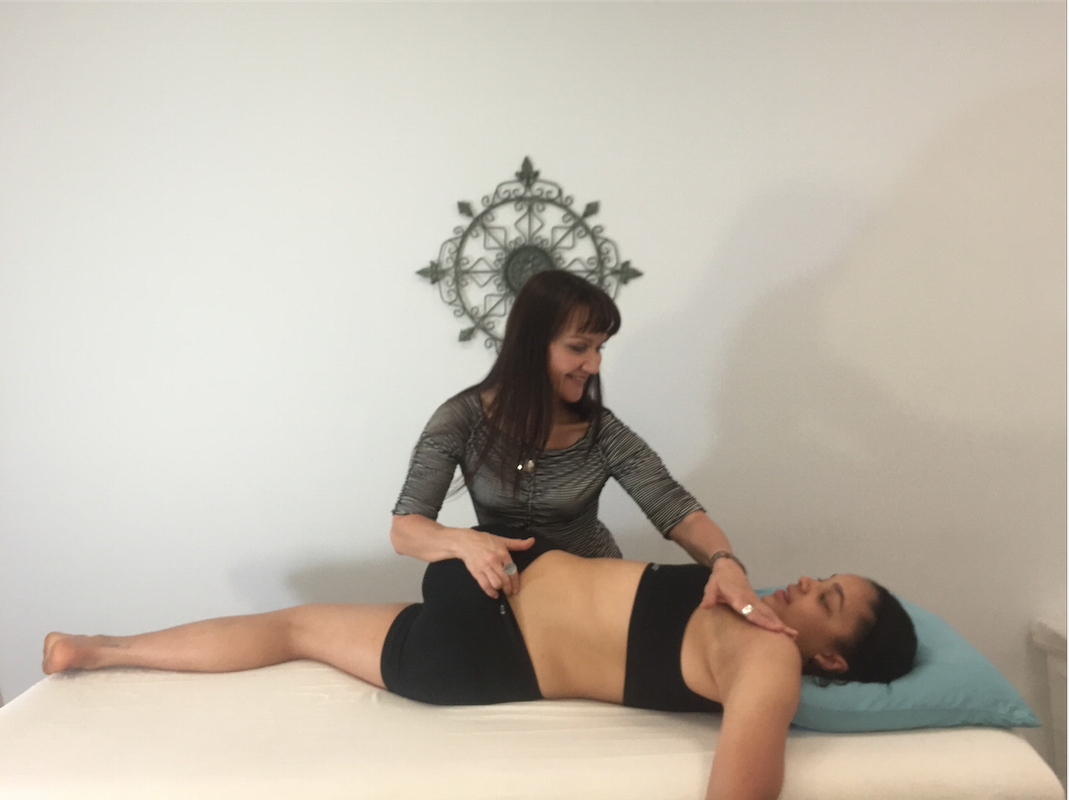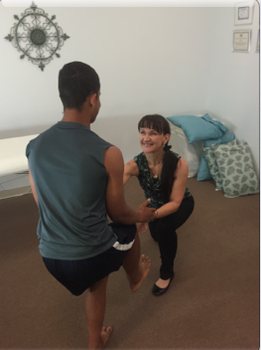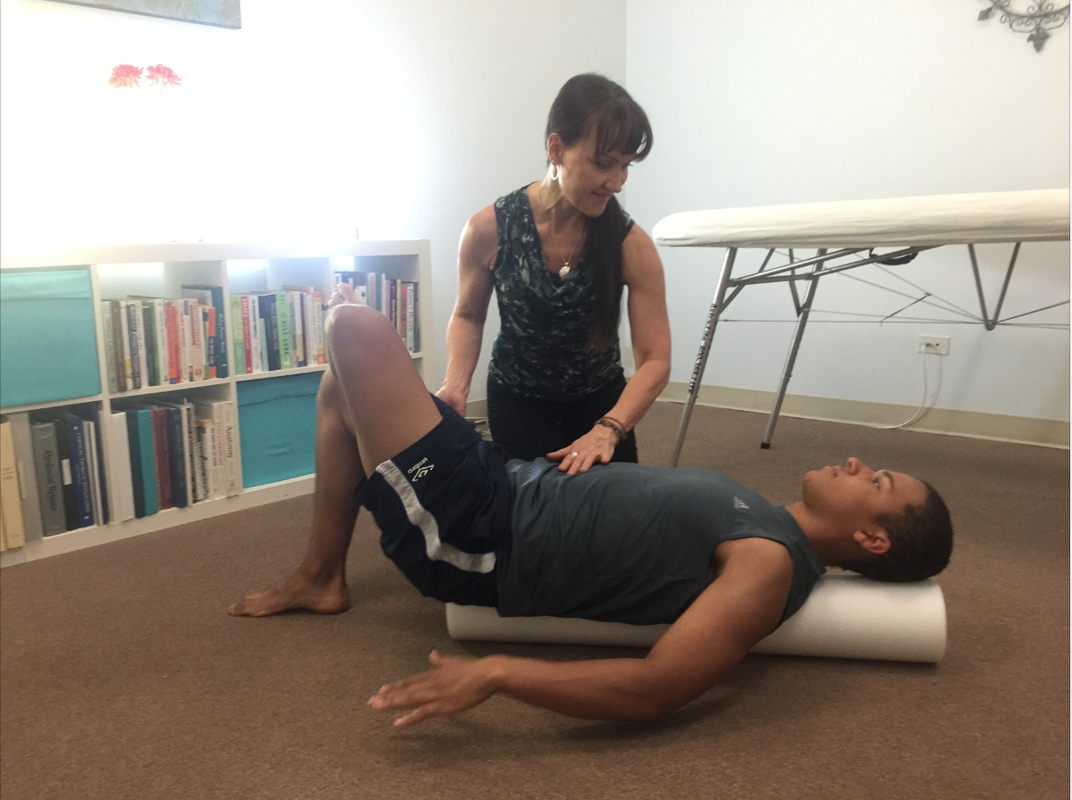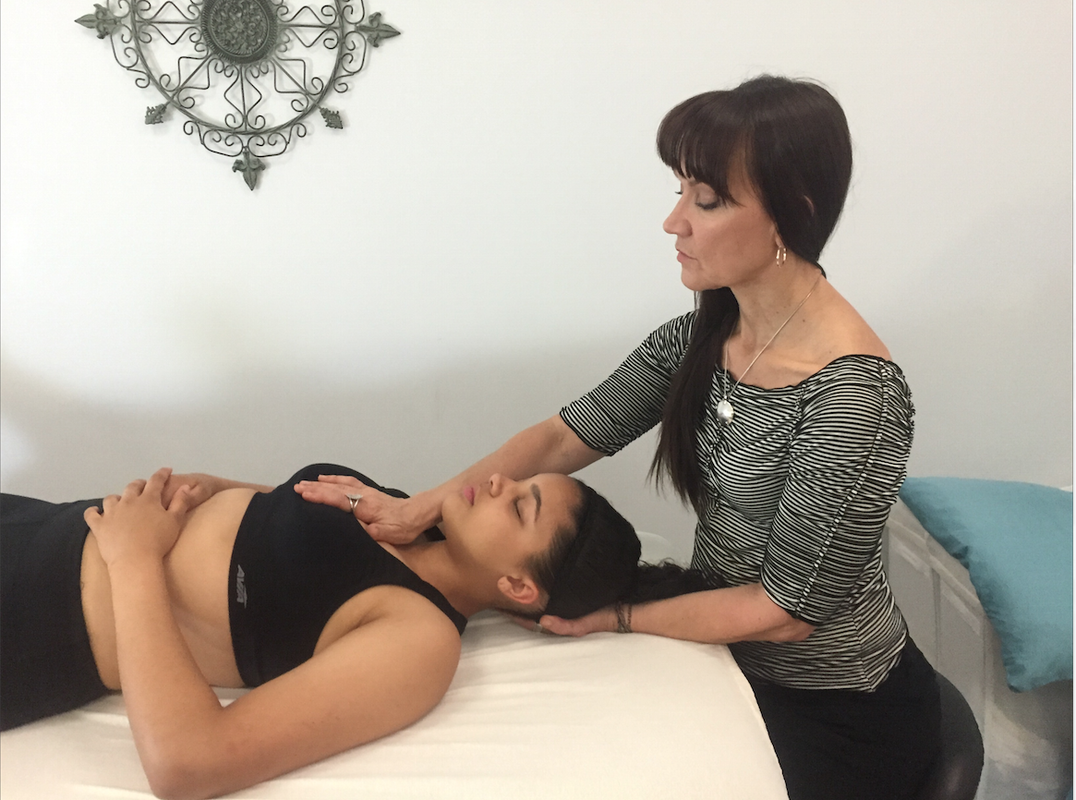ONE-ON-ONE CARE FOR HYPERMOBILITY DISORDERS
in-office or remotely
in-office or remotely
|
PAIN IS YOUR BODY TELLING YOU TO CHANGE Physical therapy focuses on restoring pain-free function and preventing physical degeneration by normalizing the structure and functioning of the musculoskeletal and neuromuscular aspects of your body. To accomplish this, appointments are 70 minutes long sessions spent one-on-one with your physical therapist. It's all about you! In order to make the therapy targeted and effective, treatment is preceded by a very thorough examination. Masking symptoms with drugs or localized treatment modalities instead of correcting what is wrong may lead to gradual degeneration of the body's structures and functioning, and subsequently more pain. The intelligent choice is using the information that the location and nature of the pain provides to restore the body to its "factory settings". Correcting what's wrong, be it skeletal mal-alignment, faulty movement patterns, hypermobility and joint laxity, emotional or habitual holding patterns, poor strength and stability around the spine and trunk in general (often referred to as "core strength"), pelvis or shoulder girdle, poor postural, movement and work habits or age-, nutrition-, or stress-related biochemical changes in the body, frees you from the need to experience symptoms such as pain, fragility or decreased function. This is a functional approach; understanding how a healthy body functions helps us understand why symptoms arise, and helps us correct the underlying malfunction. Each patient is a unique individual. There are no one size fits all-solutions. The one-on-one therapy sessions are highly individualized and include a variety of therapeutic exercise techniques, guidance on how to overcome nutritional and other biochemical glitches and, as needed, hands-on treatments using a multitude advanced physical therapy techniques. Your continued healing journey is supported through education in self-care techniques, proper body mechanics and movement patterns and through the enhancement of strength, flexibility, nutrition and body awareness and a health-promoting lifestyle in body and mind. Your continued active participation in this process is important. Only you are with your body 24-7! WHAT TO EXPECT: A COMPREHENSIVE APPROACH FOR LASTING RESULTS Everything starts with a detailed evaluation. If we don't know what is wrong, we can't target the treatment effectively. Treatment needs to be individualized in order to be maximally effective. Just doing "back exercises" or yoga "because it's good for the back" is not specific enough and may not help you reach full function, and may actually be counterproductive and be part of what locks in the problem. Simply jumping into a general exercise program can lead to injuries and pain. Most bodies benefit from normalizing function first. Once we have determined what factors contribute to what you are feeling, we set about correcting these through various means, which may include manual therapy, which may include treatment of the soft tissues and neuromuscular holding patterns of the body (see below), mobilization of bony structures in order to normalize your alignment etc. We may include specific stabilizing exercises to bring back normal functioning of the spine, correction of how you use your body (stand, walk, run, sit or work out) and ergonomics (correction of your position in bed, in the car, by your desk, in your sofa etc). Your diet, supplementation and lifestyle are significant players in health and can be improved. You advance at your own pace. Each individual's situation is unique, and requires a unique set of actions to bring about positive change. CHOOSE PHYSICAL THERAPY FIRST While orthopedic surgeons occupy an important position in health care, studies show clear cost savings and superior outcomes for patients that turn to a physical therapist first. A 2014 study showed that cost savings for patients choosing physical therapy first were significant: 75% lower costs than the total average costs for the surgery-first group. |
YOU DON'T HAVE TO WAIT UNTIL YOU'RE IN PAIN While most of us agree that regularly caring for our teeth, going for yearly check-ups with a physician, and certainly treating dental conditions, hypertension or decreased liver function long before pain sets in is a good idea, we often don't treat our musculoskeletal system with the same mind towards preventative care . A yearly physical therapy evaluation can serve to prevent injuries, slow down and even prevent physical degeneration and help maintain function throughout our lifespan. Most of us would benefit from the very specific and individualized exercise prescription only a physical therapist can provide, as well as from other types of lifestyle improvements that support health and well-being now and in the future. A regular physical therapy check-up can help you become aware of and address any dysfunction before it leads to injury and pain. You might, for example, be made aware of a limitation in hip extension that is slowing your 5K speed, or a spinal mal-alignment that may predispose you to disc injury, especially if you have a sedentary job. Addressing issues ahead of time helps you stay healthy and ready to do what you love. LIVING HAPPILY WITH HYPERMOBILITY Individuals on the hypermobility spectrum have specific needs that need to be addressed in order to prevent gradual damage of poorly protected joints, and to treat already occurring pain, instability and weakness. Hypermobile joints and looser connective tissue present a unique challenge to the patient and the treating physical therapist, and treatment needs to be planned and paced accordingly. Physical therapy is incredibly important for this population. The increased laxity of joints and ligaments, and the subsequent additional challenges such as poor balance or proprioception, muscle weakness, slower healing and recovery etc, need to be compensated for through added muscle strength, proprioception and stability and supported by healthy lifestyle practices. Learn more here and here. DO ACTIVE PEOPLE BENEFIT FROM PHYSICAL THERAPY? Once dysfunction has set in the human body does not have ways of correcting itself. Strong muscles get stronger, weak ones get weaker, unnatural movement patterns become entrenched and tightness and postural dysfunction increases. Exercising your way out of this is impossible, and at this point exercise actually deepens the dysfunction. A rehabilitative approach with therapeutic changes is needed to get the body back to its "factory settings". WHAT IS ORTHOPEDIC PHYSICAL THERAPY? Orthopedic Manual Physical Therapy is any “hands-on” treatments such as moving a joint in a specific direction and at different speeds to regain movement (joint mobilization and manipulation), muscle stretching, passive movements of the affected body part, and selected soft tissue techniques used to improve the mobility and function of tissue and muscles. Orthopedic physical therapy incorporates therapeutic exercise, ergonomic changes and other changes to how you move and live. Orthopedic physical therapists treat conditions in body regions like the head, neck, back, arms and legs. Advanced examination, communication and decision making skills that are built on the foundations of professional and scientific education facilitate the provision of effective and efficient care. EXAMPLES OF CONDITIONS TREATED Ehlers-Danlos syndrome and other hypermobility-related conditions Back and neck pain Pain around the pelvis/hips Shoulder/arm/leg pain Headaches and migraines Spinal conditions such as disc hearniations, spinal stenosis, sciatica. Ehler's- Danlos syndrome and other hypermobility spectrum issues Myofascial pain including fibromyalgia Stiffness, tightness, poor range of motion Poor balance Sports injuries Pelvic floor dysfunction Carpal tunnel syndrome Jaw pain (TMJ), bruxism (teeth grinding) Post-surgical conditions Poor posture Stress- and tension-related problems Emotional holding patterns in the body Chronic pain Please note that this is simply a short list of diagnostic labels, supplied to help prospective clients understand that any part of your musculoskeletal system may malfunction, and subsequently be treated. THE ROLE OF THE PHYSICAL THERAPIST IN DIET AND NUTRITION According to the American Physical Therapy Association (APTA) HOD P06-15-22-17 [Position]: Diet and nutrition are key components of primary, secondary, and tertiary prevention of many conditions managed by physical therapists. It is the role of the physical therapist to screen for and provide information on diet and nutritional issues to patients, clients, and the community within the scope of physical therapist practice. For those wishing to benefit from a more in-depth health consultation, health- and wellness coaching is offered as a separate service. WHY USE A PRIVATE PRACTICE DOCTOR OF PHYSICAL THERAPY? Lilian Holm Wellness offers private an safe alternative to big physical therapy clinics where a large number of patients are treated in a communal space. In these types of settings the therapist's time and attention is shared by several patients at the same time, and the bulk of the care is delivered by assistants and aides, not by doctors of physical therapy. Many patients have found this approach unsatisfying and less effective. Numerous studies and experts agree: when physical therapy clinics follow the ubiquitous practice of delegating a large part of the care to assistants the quality of care decreases. Tim Flynn, PT, PhD: “High utilization of physical therapy assistants has been shown to lead to inferior outcomes, especially when it comes to low back pain management” Beattie et al: "Emphasis on cost-cutting, high patient volume, and the use of “care extenders” may jeopardize satisfaction.” Resnick et al:"Clinics that are low utilizers of physical therapist assistants are more likely to provide superior care." Patients whose care is shared by several physical therapists are also more likely to not get well, and more likely to have MRIs and have to undergo surgery. Beattie et al. Patient Satisfaction With Outpatient Physical Therapy: Instrument Validation. Physical Therapy, 82(6). (2002). Resnik et al.Predictors of Physical Therapy Clinic Performance in the Treatment of Patients With Low Back Pain Syndromes. Physical Therapy 88.9 (2008) |
|
|



